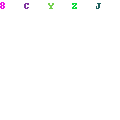Contemplation Tips from the Bhagavad Gita
Krishna has officially revealed to Arjuna the necessity for living in a serene and surrendered condition, in spite of the way that dynamic on the planet. Notwithstanding how supernatural we get a kick out of the opportunity to think ourselves, our snappy condition and the condition of our body is a primary thought in how our mind carries on in consideration. The outside regularly deals with the condition of the internal. By and by he takes up the subject of what the yogi should do in his pull back whether at home or "on pull back" elsewhere. He has quite recently determined the noteworthy activity, saying: "He should ruminate over the Atman always." So he proceeds: "where he sits should be firm, neither too high nor too low, and masterminded in an immaculate spot. He should first cover it with blessed grass, by then with a deer skin; by then lay a texture over these." (Bhagavad Gita 6:11. Krishna acknowledge that the yogi will sit on the ground-as was typical in India around at that point and even today in various events. We will look at that first and a short time later consider diverse decisions.

The ground should be firm, neither sensitive nor moving as sand or shake or on a heap of things that could slide. Sand is beat stone and resulting to sitting for a brief timeframe really twists up obviously stone-hard. Not being sensitive shows similarly that the ground should be dry. The yogi should not perch himself in a tree, on the edge of an incline, or in/on wherever where he may tumble off in case he fell over-either in rest or samadhi. The place should be spotless, without earth or debris. It should in like manner be unadulterated, not in a place where mischievous things have happened, nor in a formally sullying spot, for instance, a graveyard, a grave, or a place where butchering of any kind has happened or there are the rest of the parts of mindful animals. Clamminess and cold are much of the time properties of earth where the yogi may sit, so he is composed to first put down some kusha grass. Kusha grass is seen as cleansing, and rings woven of it are now and again worn in affection to keep the hands formally unadulterated. It is similarly an astounding spread, both physically and supernaturally. In India I have used kusha mats with a cover on top for pondering wet ground in forcefully cool atmosphere, and was never sat around idly with either damp or chilly at any rate underneath me. Such tangles also make extraordinary thought seats. In any case, simply dried kusha grass is used as a piece of tangling, and the edges are sharp and in danger to cut the one managing it rashly.
To compensate for this, and to construct the securing sway, a deer skin may be set over the kusha grass. A deer skin is the primary animal skin considered appropriate for the yogi's examination arrange (asana) in light of the way that the vibration of the deerskin is neutral and therefore supportive for peace and quietness. In any case, the deer probably passed on a trademark end. To use the skin of a deer executed for its skin is to ignore the statute of ahimsa. One of my striking memories of the Hardwar bazaar is seeing deer skins accessible to be obtained that had shot openings in them. When I once discussed disappointment with this to a shop proprietor, he was exceptionally mindful and expressed: "I perceive how you feel about the deer being shot by a gun. Numerous yogis dissent that. In case you give me some time I will find you one that was killed with a bow and jolt. I will give you confirmation to that effect." When I elucidated that I was challenging the killing of the deer, paying little mind to what shape it took, I could see that he thought I was generally speaking exceptionally offbeat. Regardless, driving yogis have uncovered to me themselves that the deer more likely than not passed on regularly. This makes such a skin hard to get, since spoil will begin promptly. Regardless, it is possible, for I have seen them.
